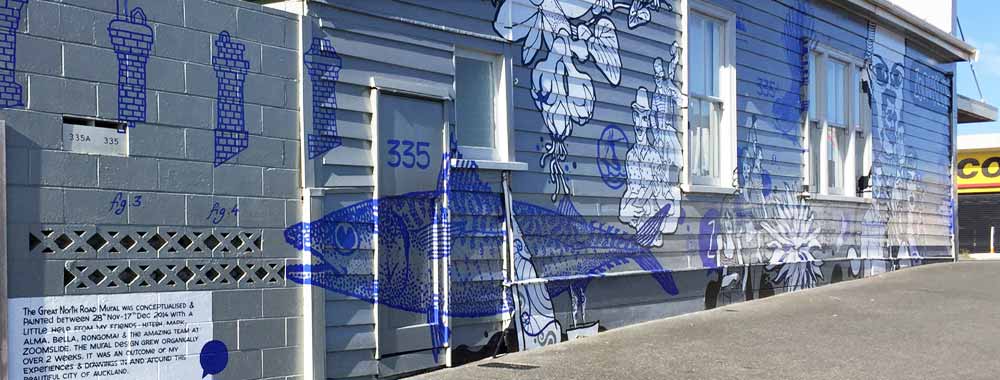
Most of you will have heard by now about Auckland Council’s planning maps which show the potential for a radically reshaped city. The Council is asking for feedback on this from residents, and this blog sets out to explain to Grey Lynn residents how you can submit your views.
We are all asked to have our say via Auckland Council’s portal here, where you will find a set of questions to answer.
We have been working with the other inner city residents’ associations and a planning expert on shaping our submission.
This blog gives you our suggestions on how to best answer the Council’s questions to get the best outcome for Grey Lynn.
The main thing to note is that there is not much time left. Submissions close at one minute to midnight tonight, May 9.
But first, a backgrounder
In December 2021 National and Labour both voted to pass the Resource Management (Enabling Supply and Other Matters) Amendment Bill into law. This law brought forward the implementation of the earlier National Policy Statement on Urban Design (NPS-UD) and also introduced Medium Density Residential Standards (MDRS). The law requires Auckland Council (along with many other councils in urban areas) to change their plans (in Auckland’s case the Unitary Plan) to allow an increase in the supply of higher density housing, especially in areas close to the city or larger shopping areas and those served by rapid transport routes. So unless there is a Qualifying Matter (something that makes a site unsuitable for higher density development) it will be rezoned – in the case of residential sites this will mean three units three storeys high per site will be allowed, or apartment buildings of at least six storeys high depending on where the land is located.
This law rolls back decades of careful planning which communities have been a part of shaping through submission processes.
Last year the GLRA submitted on the bill, noting the threat it posed to special character areas which the bill did not even mention. We also noted that, across Auckland, there is an abundance of land already zoned for higher density housing which is yet to be developed – there is enough growth capacity for the next 30 years already in the existing Auckland Unitary Plan and the supply of new housing was already escalating.
The Bill passed into law late last year and the maps Auckland Council has released are the result of its response to the government directives. We have sympathy for the Council: it has to comply with the legislation but it has also gone out on a limb to protect areas of old inner city neighbourhoods, even though many say they have not gone far enough and are very upset about the way their suburbs have been zoned. Grey Lynn has been treated far more generously than suburbs like St Marys Bay and Freemans Bay through a device known as Special Character. What is that you may ask?
Special Character
Auckland Council has introduced Special Character as a Qualifying Matter. Qualifying matters can be used to exempt areas from the up-zoning that the law otherwise demands. For example, significant ecological areas, coastal erosion zones and historic heritage have been recognised as Qualifying Matters by the government but not Special Character.
In our view Auckland Council has wisely decided to add Special Character and long-term significant infrastructure constraints to the list.
You may have had a look at the Preliminary Response maps here – then scroll down the page until you see the heading GIS Map Viewer – then click on View the draft planning maps and seen that your house is still covered by the special character and be wondering whether you still need to submit.
Yes – there is no guarantee that Special Character will be accepted by the government as a Qualifying Matter given the legislation does not mention special character at all. Others – and ultimately perhaps even the Minister – will oppose this, so if you value these very special parts of our city it’s really important to support the Council’s advance of Special Character as a Qualifying Matter.
The maps show Arch Hill and parts of Grey Lynn with diagonal lines across them? Why?
This is part of an area under investigation for light rail. Obviously this may be years away, or may never happen at all. There is an information sheet about this on the Council website here. Scroll down until you see Supporting Information on the right and click on Information Sheet: the National Policy Statement on Urban Development and the Light Rail Corridor.
Answering the Questions
Here is our guidance on answering Auckland Council’s questions:
Questions 1-5
These questions focus on walkable catchments as a determinant of where density should increase. Council would like to hear whether you support the proposed walkable catchments, or if you think they should be further or closer. They would also like to know how the walkable catchments would work (or not work) for residents. Within the walkable catchments of the city centre, metropolitan centres, large town centres (Ponsonby is one of these), small town centres, larger local centres (Grey Lynn’s Surrey Crescent shops is one of these) and rapid transit public transport stops (including train stations – our closest is Kingsland), Council proposes rezoning residential land to Terrace House and Apartment zone (which has no requirement for on-site carparks). The only thing that would stop this level of up-zoning on a site within the walkable catchment would be a Qualifying Matter that prohibits it.
Council’s method of determining walkable catchments takes no account of topography, street layout or safety. It’s simply been measured as the crow flies. In answering the questions on walkable catchments it’s worth thinking about how walkable they really are in a hill suburb like ours.
Furthermore, most people going to a destination in the city won’t be going to the very edge of the walkable catchment especially if you are in the area which is considered walkable from the city centre (the western edge of the city centre runs from the motorway at Newton, along Newton Road, Hopetoun Street, Union Street, Victoria Street West, Halsey Street and Fanshawe Street).
If you work in the city and live within Council’s proposed walkable catchment (1200 metres from the edge of the city), 800 metes from Ponsonby Road, 800 metres from Kingsland Train Station and 200 metres from Grey Lynn’s Surrey Crescent shops) then give them some details in the comments section of how far your walking route would be to your workplace or a place you regularly go to (this can be calculated on Google Maps by entering your destination and starting point and choosing walking as your mode).
Questions 6, 7 and 8
The online feedback form asks a number of questions – you don’t have to answer them all, but in terms of protecting special character, the most important questions are 6, 7 and 8.
Many years ago, in our submissions to the Proposed Unitary Plan and Draft Unitary Plan, we asked that areas not currently covered by the Special Character overlay be assessed for inclusion: some streets west of Grey Lynn Park have only a block or two covered by the overlay when the rest of the street exhibits the same intact character. We argued that in the time since the Special Character areas were identified in the early 1990s, many home owners in areas outside the Special Character overlay had restored their villas and bungalows, thereby improving the character of the streetscape. A request for a Special Character assessment is something you could consider if you feel your property should be covered by the overlay – Council is under no obligation to do this but it doesn’t hurt to ask.
Tree Cover
You might also like to mention tree cover as a qualifying matter – do you have trees in your garden that supports the urban forest and increasing birdlife of our area? It’s easy to see how the level of intensification that is proposed will have a big effect on tree cover.
Question 9
This question is about infrastructure constraints. As we all know, Cox’s Bay has a long-term pollution problem. Sewage outflows are a major issue in Auckland, particularly in older parts of the city where ageing stormwater and sewerage infrastructure isn’t up to the task, resulting in untreated sewage entering our harbour. The central interceptor is on its way, but the Precautionary Principle would dictate that a commitment to intensification should not be made until the capacity of the system to cope is assessed.
Other questions
Like many forms, this one is not very elastic and you may wish to make other comments. For example, you, like us, may believe that there can be intensification with good outcomes in Grey Lynn and you may wish to suggest where it could be done. We think there is great potential for tall apartments buildings in the commercial and light industrial streets up around Pollen, Maidstone, Mackelvie and also at Westmoreland Street around Farro.
If you agree, then you could add a comment under Question 6 saying that the deficit in intensification in Special Character areas can be made up in the areas noted above.
If I argue in support of Special Character as a Qualifying Matter am I a NIMBY?
The GLRA believes that more intense townhouse and small apartment complexes of the scale of CoHaus on Richmond Road could work very well in Grey Lynn but these need to be planned for in a structured way, with good setback, a sympathetic transition zone with neighbouring housing and room for gardens and trees. Under the current proposals, intensification will happen in a pepper-potted way and outcomes are unlikely to be satisfactory in many streets that are currently single residential dwellings. The GLRA is going to comment on that and you may wish to, also.
Further information and how to submit
Further details can be found here:
https://akhaveyoursay.aucklandcouncil.govt.nz/housing
You will find the maps here:
https://akhaveyoursay.aucklandcouncil.govt.nz/housing
– then scroll down the page until you see the heading GIS Map Viewer – then click on View the draft planning maps.
*Note – to see the changes from the current zoning you can click on the icon that looks like a book at the top left of the map – this will provide you with a line that you can move across the map to showing the existing zoning (on the left) and the proposed zoning (on the right). Please also note that no zoning change is shown for Arch Hill and parts of Grey Lynn Heights which are shown as under investigation for light rail.
The online submission form can be found here:
https://akhaveyoursay.aucklandcouncil.govt.nz/housing
– scroll down and find the heading Tell us what you think of our preliminary response – then click on Complete Form.
– Nicola Legat







Thank you Nicola, great commentary and explanation. As always from you.
I see the villa nextdoor to me at 7 Fisherton being restored beautifully and much relieved our little street will not be further defaced by another 3 storey corrugated iron monstrosity. Keep up the great work – we are lucky to have you 🙂